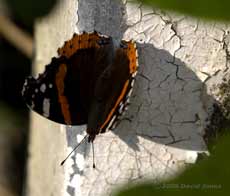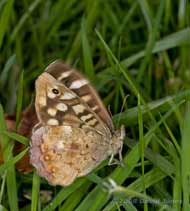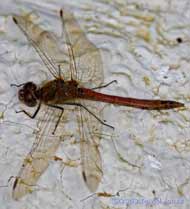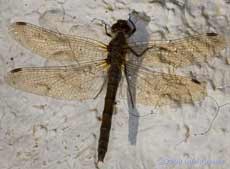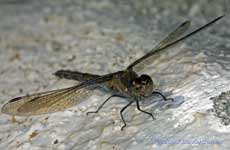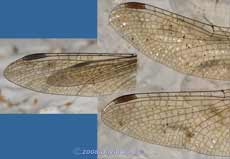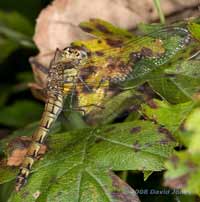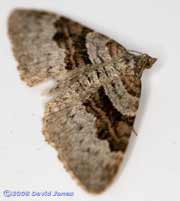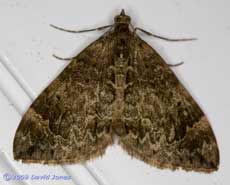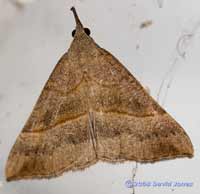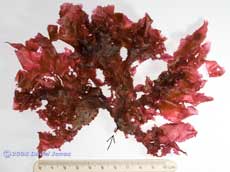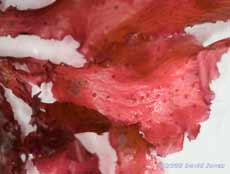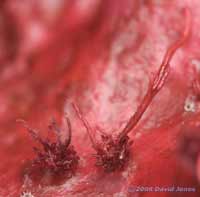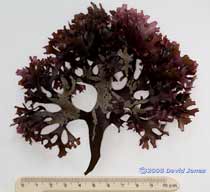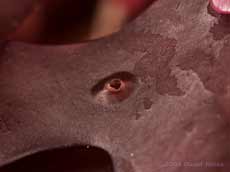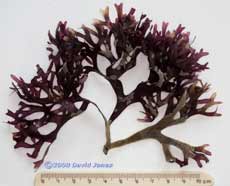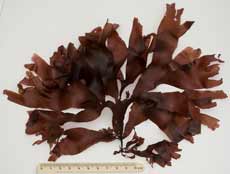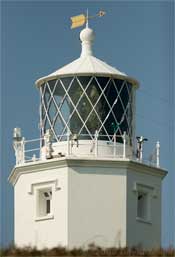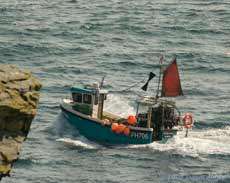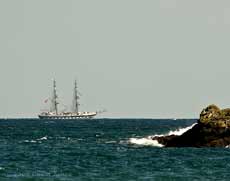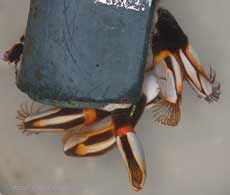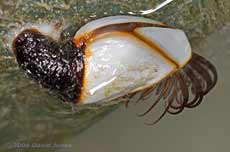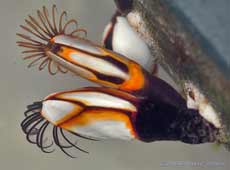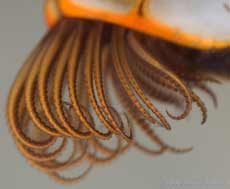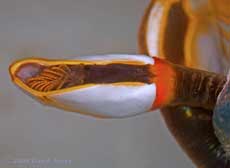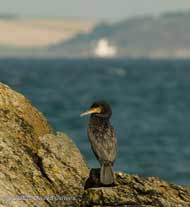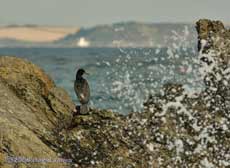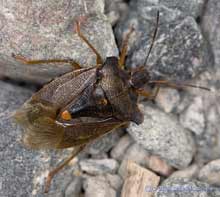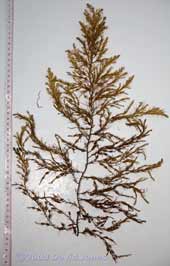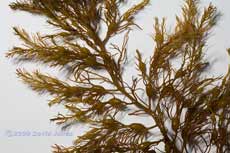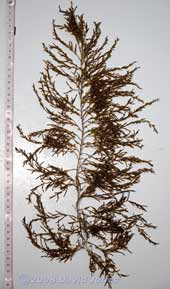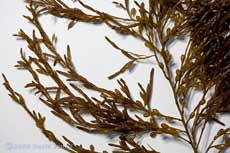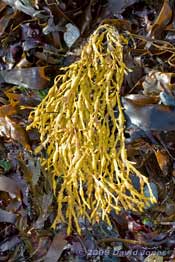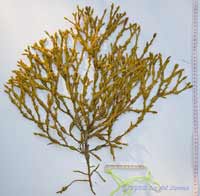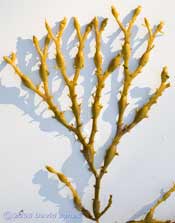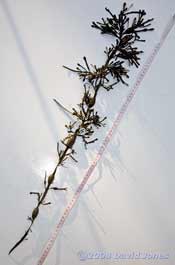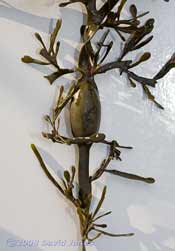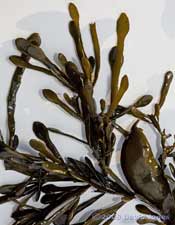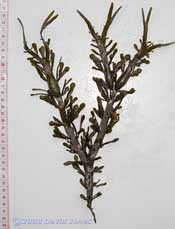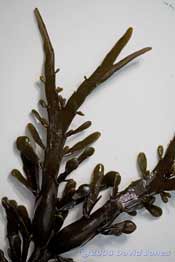Go to the last entry on this page .....Go to previous entry21 September - Another dry, if largely cloudy day, and an essential day of rest with only a brief trip out to a shop during the morning.
And five or six Speckled Woods, including one that had hardly any wing surfaces left. Despite this it was still able to fly and manoeuvre quickly. The Speckled Woods react very quickly when the camera shutter operates, and the fore-wings of this individual were already in motion by the time the flash operated.
More numerous in the field were the dragonflies which often perched on power supply points that were in sunshine. They were very sensitive to movement close to them and I didn't manage to get a clear view of the wings of the red bodied dragonflies - I shall have to try again another day. Since I have returned home Tim Norriss has suggested that it is a Ruddy Darter (Sympetrum sanguineum).
This brown-bodied individual was easier to approach. I had identified them in the past as Common Darters (Sympetrum striolatum). If I'm correct, the red ones are the males, but Tim's suggestion means that I need to search for more clues by looking much more closely at the original images.
This is a dragonfly that I had trouble approaching from above. At first I thought that it was the same species as the previous insect.
However, when I looked closely at the wing venation I found that they were different, a puzzle that will definitely have to wait until we return home. Tim has also suggested that one of them may be a Black Darter (Sympetrum danae).
And this is another species, possibly Aeshna cyanea.
As you may already be aware, here in Pinetrees campsite, the men's' wash rooms is usually the best place to find moths because the door opens towards woodland. Over the last few nights the lights have only attracted a handful of moths, of just three species. There has been just this one example of a Flame Carpet (Xanthorhoe designata)
and just one of what I believe is another Carpet - thanks to Tim Norriss for identifying it as a Common Marbled Carpet (Chloroclysta truncata). Tim also corrected my first attempt at identifying the Flame Carpet.
In addition there have been four Snouts (Hypena proboscidalis).
There was no visit to the beach today, but I did photograph some samples of red seaweeds that I picked up off the strandline yesterday. The first was a bright, crimson pink and largely delicate seaweed with fronds that had wrinkled edges. I think is is Callophyllis laciniata, a sub-littoral species (from below the low water mark). The arrow indicates the position of the stalk at the base of the plant.
Scattered over the surfaces of the fronds and along some of the edges are round spots. These are reproductive bodies,
and some of them seem to have developed quite large outgrowths - I've no idea what these structures are.
I'm sure that the next is Chrondus crispus (Irish Moss, or Carragheen), this sample with an extensive covering of bryozoan skeletons.
Looking carefully at the fronds I found small numbers of these small, swellings with openings - reproductive structures, although I'm not sure whether they fit into the sexual or asexual part of the process.
This is, I think, another example of C. crispus, although it is a much more spender form. I couldn't find any reproductive structures on this one.
This final seaweed is a bit of a puzzle. The nearest I've got so far is Halarachnion ligulatum, although I have my doubts. Its fronds are very delicate towards the tips, and stick together readily. They don't divide in a binary way (see the pictures of C. crispus), but usually into three at each split. I wasn't able to find any reproductive structures on the specimen.
The breeze was enough to maintain a bit of a chop on the sea, making it interesting for small boats heading east around the Point, like this Falmouth registered fishing boat, the Victoria Anne, with her lobster pots stacked at the stern - I wonder how accessible that lifebuoy actually is!
I hope to see the Choughs before the end of our trip, but there has been no sign of them so far. Today I satisfied myself with the sight of House Martins, both at the Point and over the campsite, and a too distant view of a kestrel hunting. In the late afternoon I spent over three hours in a (fairly) local garage while the owner did an excellent job of tracking down and correcting a frustrating electrical fault that has been causing a fuel problem on our Discovery since the last trip to Cornwall.
23 September - On another cloudless morning, and with the Discovery working as it should, we headed once again for Porthallow.
With the easterly breezes continuing, it was inevitable that the sea would be choppy, and it was rougher than on our last visit. Conditions seemed ideal for this sailing ship to use wind power, but it crossed Falmouth Bay without a single bit of canvas being hoisted (other than its ensign) - disappointing!
When we arrived on the beach there was a party of volunteers carrying out a survey of rubbish washed up. As one of them gathered bits together near to us, I spotted and rescued one piece of moulded plastic which the young man seemed reluctant to give up. The reason for my action? It was only the second time that I have seen Common Goose Barnacles (Lepas anatifera).
These crustaceans live out to sea on boats and flotsam and only appear on shore when washed up.
They are attached to their 'home' by a dark fleshy and flexible stalk (peduncle). The largest barnacle measured some 8cm in length, including the peduncle - small, considering that the peduncle can reach lengths of up to 90cm! Nevertheless they were spectacular, with the white plates of the capitulum showing feint growth patterns and outlined with orange that looked as though it had been hand painted onto them.
After a while submerged in a container of seawater some of them started to 'wake up' and we were able to watch as they used their modified head and thoracic appendages as they filtered the water for plankton. Interestingly, as you can see here, these appendages came in two different colours.
When you look more closely you can see the fine filaments that act as the filter.
This barnacle had a very pronounced red 'colour'.
It wasn't possible to keep all of the barnacles submerged so as soon as I had taken these pictures I took them and their plastic raft over to the rocks at the north end of the cove to get them back into the sea at a spot which reduced the possibility of them getting washed back onto the beach. I wasn't able to get a photograph that really show how they resemble the head and neck of a goose - hence their name. It raised a thought - of the two names 'Goose Barnacle' and 'Barnacle Goose', which came first?
While on the rocks I spotted this Cormorant resting in a spot sheltered from the wind,
and the spray as waves broke behind it. Later, it was fishing in the waves as they broke onto the beach. One effect of the present sea conditions is that there seems to be more sand on the beach now.
When I returned to the car, Sheila pointed out what we think is a Forest Bug (Pentatoma rufipes), a shieldbug that is more at home on trees and shrubs than a pebble beach!
With lots of seaweeds being washed up, I picked up some examples of brown algae to try and identify - although I'm not having too much luck with that challenge. First, what I though was Japweed, although the only illustration I have shows the bladders on stalks
rather than integral within the stalks, as they are in this seaweed.
They are on stalks in this next example,
and it has many slender reproductive structures - is this Japweed?
Walking along the strandline, this is the seaweed that first caught my eye today, with its yellow colouring contrasting with the dark browns and greens of most of the stranded vegetation.
Here it's spread out on a table, extending some 50cm across and high.
It has much more sturdy 'stems' than the first two seaweeds, and has bladders within them.
Another seaweed with large bladders incorporated in what this time is a long stalk (over 75cm).
Each bladder is several centimetres long, and in comparison the branches are very small,
with each branch tip being almost paddle-like. While some of these were slightly swollen, many were flat.
Finally, what may be another piece of the same seaweed species, except that this example is branched, with each branch ending in a forked tip.
As with the previous example, many of the lateral branches are paddle-shaped, with some clearly swollen. The variations that reward even a casual look along the strandline are telling me that I have a lot to learn about identifying seaweeds!
Click on images to see larger versions |
|
